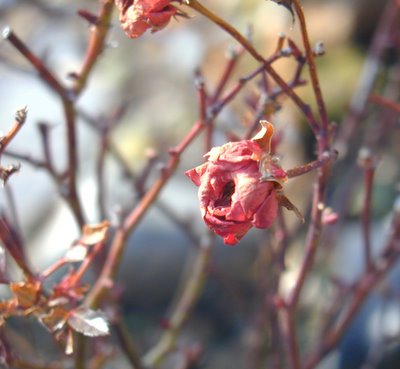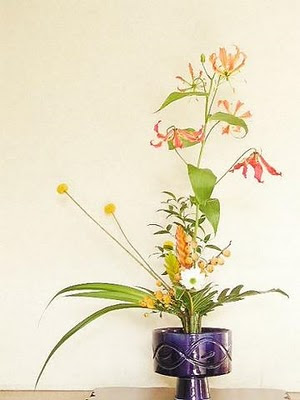:::::::::::::::::::::::::::::::::::::::::::::::::::::::::::::::::::::::::::::::::::::::::::::::::::::
January
***** Location: Japan
***** Season: Late Winter
***** Category: Season
*****************************
Explanation
Haiku ichigatsu in the Edo period relates to the climate of present-day February,
but some festivals are dated in our present-day January.
. . Names of Japanese months and their meanings . .
the first lunar month is
. Mutsuki 睦月 (むつき) - Sociable Month
shoogatsu, 正月 the New Year
January 1 till 15, the first half of the first lunar month
. New Year ... a Haiku season of its own
. The First Lunar Month 一月 ichigatsu - 睦月 mutsuki - in Edo .
. . . . WINTER - the complete SAIJIKI
:::::::::::::::::::::::::::::::::::::::::::::::::::::::::::::::::::::::::::::::::::::::::::::::::::::
Facing to the Coldest Season ... January
ichigatsu 一月
January is the first month of a year. The meaning of the word, "the first" gives us a new and strong impression. Accordingly, the arrival of a new year makes us feel ourselves refreshed. And also we are conscious that all the things surrounding us come to be fresh. If you refer to the "Saijiki", you will find many seasonal words about the New Year listed in the book, and you can easily understand what I have said in the above phrases.
It is supposed that perhaps the Japanese people have respected all the creations as to be pure and to be revived in the New Year, and have made up their mind to start their own new life with a new resolution. Through pious praying, they strongly hope to be happy and to lead a full life in the new year by clearing up the past which they could not be satisfied with. For this reason we pay special attention to some words by putting suffix of hajime, hatsu or zome, which mean first, on the head or the end of the words of daily work or life, such as Shigotohajime(first working), Kuwahajime(first farming), Ryohajime(first fishing), Nuihajime(first sewing), Urihajime(first selling). We put hatsu onto the words of nature, such as Hatsuhi(first Sun), Hatsuzora(first sky), Hatsuhikari(first light of the Sun) so as to express our respect to Nature of the New Year.
January is also the extremely cold season in a year. Shoukan(less cold) fall on the 15th day after Touji(winter solstice). It is on about January the 6th. Kan(cold season) continues from Shoukan to the day before of Risshun(the first day of spring). So we refer to the period of these 30 days as Kan-no-uchi(midwinter) from Kan-no-iri(beginning of midwinter) to Kan-ake(the end of cold season). Daikan(great cold) is on the 15th day, around January 20th after Shoukan. It is by far the coldest through the year. It is wrong to refer to these 15 days between Shoukan and Daikan as Shoukan. Either Shoukan or Daikan shows only one day of the twenty four designated seasonal days, so now let's learn correctly how to use each word.
The seasonal words of January are almost connected with Kan-no-uchi except those of the New Year. So we feel severe coldness from the seasonal words even if they sound enjoyable and lovely, such as Kazahana(snow flakes), Yukibare(clear sky between snowfall), Kangetsu (cold moon), Fuyusoubi(winter rose), Kanbeni(rouge of winter). And also we feel the coldness from the clear sound of seasonal words such as sayuru(make clear) and iteru(freeze), which beautifully and accurately express its feeling even if they are apart from their original meanings.
Inahata Teiko
http://www.kyoshi.or.jp/12month/12month-1.htm
:::::::::::::::::::::::::::::::::::::::::::::::::::::::::::::::::::::::::::::::::::::::::::::::::::::
Japan in January
Great link with many customs and events
http://www.bookmice.net/darkchilde/japan/jjan.html
Japanese Festivals
January .. .. February .. .. March .. .. April .. .. May .. .. June .. .. July .. .. August .. .. September .. .. October .. .. November .. .. December
http://www.bookmice.net/darkchilde/japan/jfestival.html
*****************************
Worldwide use
Australia
kigo for summer
Southern Hemisphere, Tropics ...
Adjustments for each region must be made.
Calendar reference kigo
*****************************
Things found on the way
Poems, Quotes, Folklore Sayings, Links, References, Lore Ideas, Garden Chores
January is here, with eyes that keenly glow,
A frost-mailed warrior
striding a shadowy steed of snow.
Edgar FawcettCompiled by Michael P. Garofalo
http://www.egreenway.com/months/monjan.htm
*****************************
HAIKU
The cut in this haiku gives it the space to create a great image. When it was first published in 1969, many traditional haiku poets rejected it because of this cut in the middle of line two.
Maybe he was too early for his time. Now this haiku is well accepted.
It seems Ryuuta was talking about a small brook behind his estate.
一月の川 一月の谷の中
ichigatsu no kawa
ichigatsu no tani no naka
river in January
in the middle of a valley in January
Iida Ryuta (Ryûta) 飯田龍太
Tr. Gabi Greve
Il n'y a qu'un fleuve
Au milieu de la vallée...
Premier mois de l'année.
© tr. Laurent Mabesoone
январская
река по январской
долине
© Haiku Mena
:::::::::::::::::::::::::::::::::::::::::::::::::::::::::::::::::::::::::::::::::::::::::::::::::::::
January first -
the children teased by
sparse snowflakes
Carole MacRury, WHCworkshop
:::::::::::::::::::::::::::::::::::::::::::::::::::::::::::::::::::::::::::::::::::::::::::::::::::::
Here in texas, we get snow rarely and little. it makes it all the more remarkable.
january snowstorm
snow epaulettes
on the stone eagle
january morning
lawn chairs crosshatched
with snow
january sunrise
a loaf of snow
on the strawberry jar
january sunrise
turning thin fog
golden
susan delphine delaney
xxxxxxxxxxxxxxxxxxxxxxxxxxxxx
January noon
muezzin's call to prayer
rises and floats
That was in the city centre today -- a most beautiful call, which seemed to evaporate into the noontime heat and spread all over the city.
Isabelle Prondzynski (Nairobi, Kenya)
xxxxxxxxxxxxxxxxxxxxxxxxxxxxx
Haiku for January
by Victor P. Gendrano
http://www.geocities.com/vgendrano/janhaiku.html
xxxxxxxxxxxxxxxxxxxxxxxxxxxxx
Haiku from January 2003
by Gary Warner
http://www.haikuworld.org/gary/jan2003.gar.html
xxxxxxxxxxxxxxxxxxxxxxxxxxxxx
Aozora haiku publication : January 2003
Editor : Jasminka Nadaskic Diordievic, and submissions (s)
http://www.tempslibres.org/aozora/en/hpub/pub0301.html
xxxxxxxxxxxxxxxxxxxxxxxxxxxxx
A Japanese Garden of Verse
january snow
memories of years gone by
rain and warm winds blow
Lotus
http://www.webcom.com/~erique/haiku/haiku199.html
xxxxxxxxxxxxxxxxxxxxxxxxxxxx

a rose is
a rose is a rose -
January rose
Gabi Greve, January 2006
*****************************
Related words
***** January in Kenya
***** New Year
a Haiku season in itself
. WKD : January - KIGO CALENDAR .
:::::::::::::::::::::::::::::::::::::::::::::::::::::::::::::::::::::::::::::::::::::::::::::::::::::
[ . BACK to DARUMA MUSEUM TOP . ]
[ . BACK to WORLDKIGO . TOP . ]
:::::::::::::::::::::::::::::::::::::::::::::::::::::::::::::::::::::::::::::::::::::::::::::::::::::










































